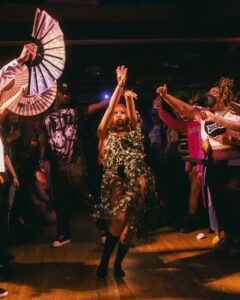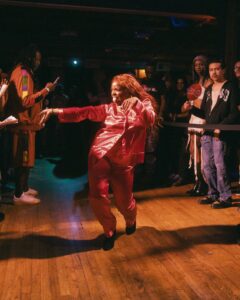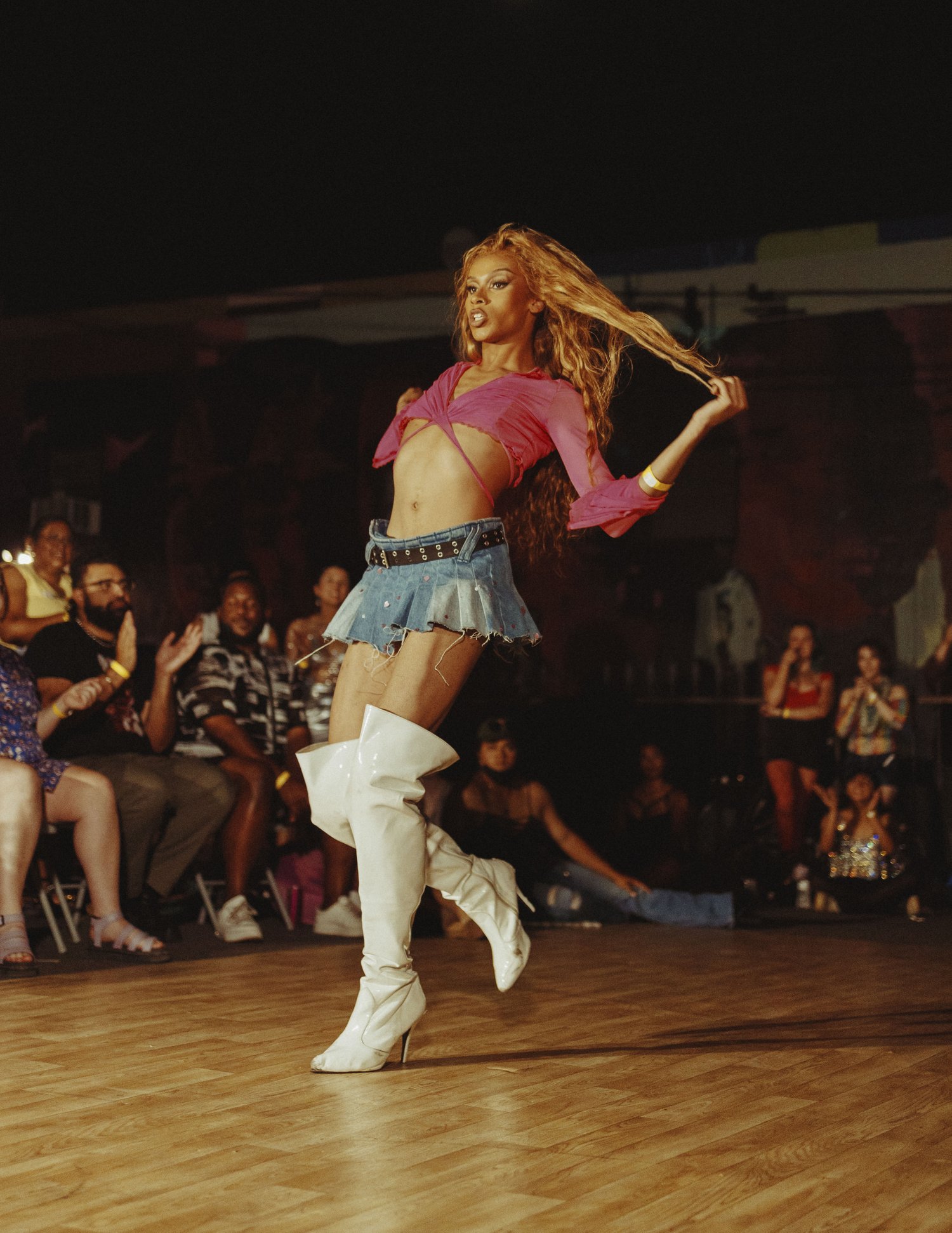Oakland to All is a grassroots organization working to bring Ballroom — a performance-based subculture of the LGBTQ+ community — to queer and trans youth across the Bay Area through their not-for-profit balls.
Ballroom is a scene where people “walk’’ or compete through ornate performances for a number of different categories, such as “serving face” with makeup and attitude, walking “runway” with extravagant outfits or “vogue performance,” a dancing category. Moreover, Ballroom holds a space for LGBTQ+ expression and community engagement.
Oakland to All holds balls for all members of the LGBTQ+ community, including youth from a subset of Ballroom called the Kiki Scene. The Kiki Scene puts a heavy emphasis on radical acceptance of queer and trans youth for who they authentically are. Oakland to All is the product of a long history of Ballroom that has transformed the scene into what the LGBTQ+ community knows and loves today.

photo courtesy of oaklandtoall.com
Ballroom was founded during the Harlem Renaissance, an art and cultural movement in the Black community in the early 20th century. The Hamilton Lodge Ball was a place in Harlem where the LGBTQ+ community could come together, despite scrutiny and maltreatment from both the public and city officials. However, Ballroom had issues surrounding anti-Black bias and racism, with predominantly white judges who voted in favor of Eurocentric features when judging performances.
As a result, Crystal and Lottie LaBeija, exhausted by this ceaseless racism, created their own ball for Black LGBTQ+ folks in the early 1970s. This ball and the balls following included a house system where members could compete with their respective houses, including the House of LaBeija.
Houses still exist today, acting as a chosen family for Black and Latine LGBTQ+ communities to exist freely, openly and powerfully in their queer and trans identities. The dedication and work, done to make Ballroom a community for Black and Latine LGBTQ+ folks, has shaped Ballroom into the scene of radical acceptance that it is today.
Oakland to All continues to build off of this impactful legacy that Crystal and Lottie LeBeija have left for Ballroom. Oakland to All’s mission statement reads, “We hope to continue cultivating a safe, warm, and welcoming space where the ballroom scene, especially its lesbian, gay, bisexual, transgender, and queer community members can thrive free from homophobia, sexism, transmisogyny, and racism.” Their commitment to these values exists in their work to engage youth in Ballroom.

photo courtesy of oaklandtoall.com
19-year-old Karma Telfar is a member of the House of Telfar and a youth organizer with Oakland to All, working to bring the Kiki Scene to the Bay Area. Telfar encourages LGBTQ+ youth programming in Ballroom because he finds it to be a genuinely safe space for youth to explore their identities. “It’s truly a place where you can come and have friends that accept you and want you to be your most authentic self… no matter what,” said Telfar.
While GSAs (Gender Sexuality Alliances) are certainly an option for LGBTQ+ youth to feel supported in middle schools and high schools, Telfar finds them to be a very small group in comparison to a group that one might find in Ballroom.
Additionally, GSAs are not always a space that everyone finds comfort in, especially because allies can attend and not everyone is comfortable with sharing their identity in a school setting.
When someone attends a ball, Telfar finds it to be different. “[When people perform in Ballroom] it’s the most confident version of themselves,” said Telfar. “My confidence expanded immediately. I have learned through my mentors, and I am learning every day how to be a better leader for both my community and in general.”
As a member of the House of Telfar, Telfar was immediately surrounded by support and felt a connection with his chosen family. He feels his house has inspired him to pursue his artistry and show how it can be both meaningful to him and the world he finds himself in.

photo courtesy of oaklandtoall.com
Telfar works to support Oakland to All’s mission of making Ballroom more accessible to youth; he is passionate about doing this because of how much Ballroom inspires him. “[Ballroom] is one of the most interesting and beautiful communities, mainly because it is so marginalized that there is just no other way that it can be built other than accepting everybody… especially in a heteronormative cisgender society where everybody needs to conform,” said Telfar.
Telfar finds authenticity to be an essential aspect of performing in the ballroom scene and the overall existence of youth in the ballroom community. “It’s about how [youth] think their most authentic self and their art is truly shown without thinking about whether it is going to be liked or not,” said Telfar.
To ensure that a ball goes according to plan, especially involving youth in the Kiki Scene, Telfar has to do a lot of planning. He follows these specific action items to ensure success:
The first step is finding a theme. Is there a specific movement/moment/event to be highlighted? An example of this was the Christmas theme for the holidays where there was toy drive that served as a ticket for admission
The second step is finding categories in accordance to the theme chosen where categories serve alongside the theme. An example of this was categories like Santa’s elves and Christmas colors for the Christmas themed ball.
The third and final step is looking for venues that are accesible to youth. This could look like a venue being accomodating for the evening or a pre-show to a ball that youth can perform in.
These action items will prove useful to Telfar as he plans an upcoming ball in the late spring of 2024. This ball is a part of the Kiki Scene and will center youth, ensuring that all performances are done by youth under the age of 25. Telfar is excited about the future of the Kiki Scene in the Bay Area. “There more people who want to join the Kiki Scene and in every single ball, every single ball, you’ll see new faces and new youth who will say ‘How can I start?’” Telfar said.

photo courtesy of oaklandtoall.com






